Kicking Off 2012 With Rumiko Takahashi and The Owl in the Rafters
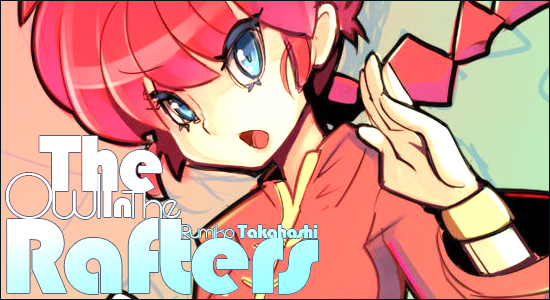
Happy New Year and welcome to the first Owl in the Rafters update of 2012! As I promised back in November, I am returning to my proper gimmick as of today! For those of you wandering in for the first time let me give a brief introduction: I go by the handle Tyto here on 91.8 The Fan and my job here is to write articles and the gimmick I mentioned is -going with my owl theme- giving an overview -or “bird’s eye view” if you like- of my subjects rather than focusing on just one single anime, manga, game, or movie.
At first I stuck to authors, artists, and the occasional director, covering all the major works of their career, the growth and development they’ve made as artists, and the impact they’ve had in their field and on their audience. After a while I also branched out into linking together otherwise unrelated titles by common theme or genre, and on more than one occasion I caved in and just reviewed one little show or manga by itself, either for topical reasons or just on a personal whim. When I made my last update in November, before taking December off, I made an early New Year’s resolution to avoid leaning on easy reviews and to stick to my anthology and collection schtick.
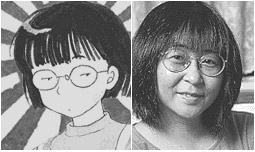 So, now that December is over and I’ve had my little Winter break, it’s high time I shake the frost off my wings and get this show back up in the air, and to do that I’d like to start the new year with an overview of the career of one of the biggest names in anime outside of Japan during the 80s and 90s, a woman once dubbed the “Princess of Manga”, I speak of course of none other than the famous (and perhaps in some circles infamous) Rumiko Takahashi. If you don’t recognize her by name I’m sure you’ll all be familiar with her more popular titles, Urusei Yatsura, Ranma 1/2, and Inuyasha – A Feudal Fairy Tale to name just a few.
So, now that December is over and I’ve had my little Winter break, it’s high time I shake the frost off my wings and get this show back up in the air, and to do that I’d like to start the new year with an overview of the career of one of the biggest names in anime outside of Japan during the 80s and 90s, a woman once dubbed the “Princess of Manga”, I speak of course of none other than the famous (and perhaps in some circles infamous) Rumiko Takahashi. If you don’t recognize her by name I’m sure you’ll all be familiar with her more popular titles, Urusei Yatsura, Ranma 1/2, and Inuyasha – A Feudal Fairy Tale to name just a few.
I really don’t want to take too much time on the better known titles, on the assumption that you’re familiar with them already, so I’ll try to be quick about this, starting with Urusei Yatsura (commonly translated as “Those Obnoxious Aliens”, and alternatively retitled as LUM: Urusei Yatsura in some international releases). Most notable about the series is that as a 1978 publication that ran in Shogakukan’s Weekly Shounen Sunday magazine for over ten years, Urusei Yatsura is the earliest big success manga utilizing the “Sudden Girlfriend Appearance” trend that has since become commonplace and its own kind of subgenre of romantic comedy.
Just as the term’s obvious wording describes, Sudden Girlfriend Appearance stories are those in which the main character, generally a perfectly average young man, has his mundane everyday life launched into terribly sexy chaos when a mysterious girl appears in his life and through some plot device is now determined to make the main character her boyfriend/lover/husband. Due to the nature of this premise/plot device the Sudden Girlfriend is often nearly identical to the Magical Girlfriend (Not to be confused with the Magical Girl character type) archetype where a main character’s love interest has some form of unusual power or skill that tends to be the hinging plot device behind various romcom hijinks: think I Dream of Jeannie.
 For those unfamiliar with Rumiko Takahashi’s hit debut manga, the story of Urusei Yatsura revolves around Ataru Moroboshi and his less than likely alien fiance, Lum. Lum is the princess of an alien race of invaders intent on taking over the Earth. According to their own customs however they have given the Earth a sporting chance to stave off invasion: one randomly selected human is allowed to play a game of tag with one invader, and if he can win his planet is saved. This randomly selected human is of course Ataru, and the alien he must touch the horns of by the end of the week allotted for the game is Lum. Via some certain misunderstandings Lum comes to believe that Ataru has proposed to her, and under the initial fear of angering the aliens, Ataru cannot deny the claim and so begins his wacky sitcom adventure life of living with his beautiful, superpowered, alien fiance and all the chaos it brings.
For those unfamiliar with Rumiko Takahashi’s hit debut manga, the story of Urusei Yatsura revolves around Ataru Moroboshi and his less than likely alien fiance, Lum. Lum is the princess of an alien race of invaders intent on taking over the Earth. According to their own customs however they have given the Earth a sporting chance to stave off invasion: one randomly selected human is allowed to play a game of tag with one invader, and if he can win his planet is saved. This randomly selected human is of course Ataru, and the alien he must touch the horns of by the end of the week allotted for the game is Lum. Via some certain misunderstandings Lum comes to believe that Ataru has proposed to her, and under the initial fear of angering the aliens, Ataru cannot deny the claim and so begins his wacky sitcom adventure life of living with his beautiful, superpowered, alien fiance and all the chaos it brings.
This very first serialized title of Rumiko Takahashi’s ran for 9 years before ending, amassing 34 original volumes, totaling over 300 chapters, and saw a 10 season/195 episode long TV series that ran for 5 years, as well as 6 films and 12 OVAs. This totals just a little under 5,000 hours of animated footage to the series’ name. Sadly Viz Media’s English publication of the original manga is incomplete and discontinued. The English license of the anime, once held by AnimEigo has actually just recently expired (September 2011) and so their English language DVDs are now out of print.
Speaking of harems this leads me to none other than Rumiko Takahashi’s world famous romantic comedy and one of the earliest and biggest flagships for the harem subgenre, Ranma 1/2. The original manga as well as the 161 episode long anime adaptation were licensed by what was at the time a very young Viz Media for English distribution in 1993 and 1994, respectively. This made Ranma 1/2 one of Viz Media’s earliest acquisitions and indeed their first real big success.
In regards to the story, Ranma 1/2 actually played out very similarly to Urusei Yatsura in that they both boil down to being a seemingly endless chain of sitcom-like hijinks centered around the male and female leads each attracting more than their fair share of unwanted admirers. The twist of course being that in Ranma 1/2 the male and female leads are the same character. Otherwise it pans out like you might expect any harem comedy to, with just a smidgen more action than most of the rest.
I guess this is where I should break down the premise again for those of you unfamiliar with the title. Ranma 1/2 centers around a titular main character, Saotome Ranma, the son of a Chinese martial arts master and his many wacky adventures born from misunderstandings about a very unusual condition. As a result of falling into the spring of cursed girl, Ranma will change into a beautiful girl when splashed with cold water, and back to a boy with hot water. Now living with the Tendo family, a friend of his father’s, Ranma must get along with the household’s three lovely daughters, blend in at the local high school, and dodge the countless admirers after both Ranma himself and his female form, also referred to as Ranma.
Ranma 1/2 is a prime example of a gender-bender comedy done well. Takahashi really does a great job of getting Ranma and his friends in and out of unique kinds of trouble that let her juggle the martial arts action appeal while still leaving plenty of room for the romantic angle of the story all while keeping the genderswap gimmick center stage. Unlike many shounen titles where the authors seem to have a poor grasp on exactly who their hero is supposed to be and how he’s supposed to act, Takahashi relies less on maintaining long ongoing plots and more on the situational comedy of taking the consistent, familiar characters and throwing them from one disaster to another and just letting their established personalities drive the plot from there.
 The last of Rumiko Takahashi’s big hit titles is likely to be the most well known among the most recent generation of anime fans, it is none other than the infamous Inuyasha: A Feudal Fairytail. Often criticized for Cartoon Network’s [adult swim] segment pointing out the constant distressed screaming of names back and forth between the two protagonists, Inuyasha and Kagome, the series is a particularly strange departure from Rumiko Takahashi’s usual style of story telling. For one, Takahashi had generally been well known for fairly unique works of fiction, often being the first major success in the offshoot subgenres she tinkered in and always mixing elements of male and female oriented appeal points in ways that had not quite caught on at the time. Inuyasha however simply jumped aboard an existing band wagon and did virtually nothing to twist or bend the existing formula.
The last of Rumiko Takahashi’s big hit titles is likely to be the most well known among the most recent generation of anime fans, it is none other than the infamous Inuyasha: A Feudal Fairytail. Often criticized for Cartoon Network’s [adult swim] segment pointing out the constant distressed screaming of names back and forth between the two protagonists, Inuyasha and Kagome, the series is a particularly strange departure from Rumiko Takahashi’s usual style of story telling. For one, Takahashi had generally been well known for fairly unique works of fiction, often being the first major success in the offshoot subgenres she tinkered in and always mixing elements of male and female oriented appeal points in ways that had not quite caught on at the time. Inuyasha however simply jumped aboard an existing band wagon and did virtually nothing to twist or bend the existing formula.
The “ordinary-schoolgirl-bored-with-life-whisked-away-into-a-fantasy-world-in-which-she-is-revealed-to-be-the-key-divine-figure-in-causing/averting-ancient-world-ending-myhtos/prophecy-and-falls-in-love-with-a-rough-around-the-edges-magical-warrior-boy”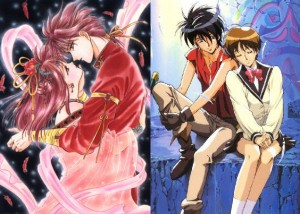 was a path already well tread, and that had already given brith to two very well received hit titles, Fushigi Yugi: The Mysterious Play and The Vision of Escaflowne, both of which utilized not only the same basic premise, but also blended elements of female oriented writing and drama styles and generally male oriented action/adventure.
was a path already well tread, and that had already given brith to two very well received hit titles, Fushigi Yugi: The Mysterious Play and The Vision of Escaflowne, both of which utilized not only the same basic premise, but also blended elements of female oriented writing and drama styles and generally male oriented action/adventure.
Really, the only thing that set Inuyasha apart from other cookie cutter girlish fantasy stories was Takahashi’s pre-established reputation and popularity. Still, in spite of very easily being the least inspired of Rumiko Takahashi’s hit titles, it is the second of her manga to have won her the Shogakukan Manga Award, with the first being Urusei Yatsura. As usual Inuyasha was a long running title with 558 chapters collected in 56 volumes, and 193 episodes in 2 different animated series, 4 films, and 1 halfhour OVA over the course of over a decade.
I don’t think I really need to elaborate on the premise of Inuyasha, but will say one thing in regards to the plot: Those of you who watched the original anime’s dub running on Cartoon Network in the 2000s may recall how old and annoying it got that Inuyasha and the gang would confront and defeat the villain Naraku only to find out it was a fake and that the real Naraku was miles away then chase him for 12 episodes, catch up, fight him, defeat him, and find out it was yet another fake almost ad nauseam. Yeah, well he continues to do that well past the end of the first anime series and keeps playing that drudging game of tag/hide & seek/keep away for 500 chapters. Yeah, 500 chapters they spend trying to find and beat Naraku. It got old. Just saying.
Anyhow now that I’ve got those three behemoths out of the way we can move on. While Rumiko Takahashi may be best known for the big international hits I just went over, she has also published a number of other successful stories that fans of Inuyasha, Ranma 1/2, and Urusei Yatsura are likely to love, and unlike many of the titles I touch upon in these articles, nearly all of Rumiko Takahashi’s manga have been published in English thanks to Viz Media.
Turning the clock back to 1980, right in the middle of Urusei Yatsura’s publication, Rumiko Takahashi began running another manga, called Maison Ikkoku in Shogakukan’s Big Comic Spirits magazine, a weekly magazine aimed at an older male audience. The title is the name of a boarding house, Maison being French for “house” and Ikkoku being Japanese for “A Moment” or “One Moment”. The series was in its own right a successful series but is often overlooked because it sits outside Takahashi’s better known target audience of young teens.
The story follows the various different people living in the titular boarding house focusing mainly on the relationship of Yusaku Godai, a 20 year old young man still trying to get into college, and Kyoko Otanashi, a beautiful 22 year old girl who becomes the new manager of the Maison Ikkoku at the start of the story. The two are run through the typical love drama hoops of struggling to come to terms with their own feelings, admiting their feelings to one another, coming to terms with each other’s feelings for them, and all the love triangles that pop up along the way. This may not be the most unique of Takahashi’s work and does lack her usual fantasy elements but it is a solid title and a great bridge for Takahashi’s younger audience to step up and out into a different target demographic.
If there’s anything to be said about stepping out, Takahashi’s Mermaid’s Saga is the go to name. In 1984, also in the middle of Urusei Yatsura‘s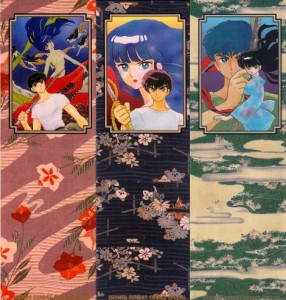 publication, as well as in the middle of Maison Ikkoku‘s publication in 1984 Rumiko Takahashi began a story called Ningyo no Mori (Lit. “[The] Forest of the Mermaid”/”[The] Mermaid’s Forest”) followed by Ningyo no Kizu (Lit. “Scar of the Mermaid”/”Mermaid’s Scar”) and finally concluded with Yasha no Hitomi. (Lit. “Pupil of the Yaksha” where pupil refers to the black of the eye and Yasha refers to the Yaksha, a malevolent spirit/monster of Buddhist mythos. However the final story arc is appropriated as Mermaid’s Gaze for English release.)
publication, as well as in the middle of Maison Ikkoku‘s publication in 1984 Rumiko Takahashi began a story called Ningyo no Mori (Lit. “[The] Forest of the Mermaid”/”[The] Mermaid’s Forest”) followed by Ningyo no Kizu (Lit. “Scar of the Mermaid”/”Mermaid’s Scar”) and finally concluded with Yasha no Hitomi. (Lit. “Pupil of the Yaksha” where pupil refers to the black of the eye and Yasha refers to the Yaksha, a malevolent spirit/monster of Buddhist mythos. However the final story arc is appropriated as Mermaid’s Gaze for English release.)
Unlike anything she had done up until that point and indeed unlike anything she has done ever since, the Mermaid’s Saga was a horror series that followed a man cursed by the magical properties of a mermaid. Myth and folk lore say that the flesh of a mermaid when devoured can grant immortality to man, but when one such man is granted his immortality he begins to regret watching the people around him wither and die, leaving him alone. In hopes that a mermaid will know how to restore his mortality he begins on an adventure to find another mermaid. On the way he rescues an immortal girl being held captive by aging mermaids intent on eating her in order to restore their own youth. Together the two immortals continue their quest together, meeting other immortals driven mad or turned into monsters by the curse.
 Moving right along the time line, in 1987 Rumiko Takahashi began publishing three different stories the most notable is of course Ranma 1/2 which would continue to run regularly until 1996. The other story she began publishing was called One Pound Gospel and followed a young, up and coming, flyweight* boxer, Kousaku Hatanaka, at the start of his professional career. There is a big hurdle staring Hatanaka down however; he has a big appetite and a compulsive eating problem that looks like it’s digging an early grave for his athletic career. His poor eating habits push the tiny framed boxer from a mere flyweight* all the way up to featherweight* and suddenly young Hatanaka is stuck fighting bouts with boxers significantly bigger than he is. Enter Sister Angela, a Catholic nun who takes it upon herself to help Hatanaka combat the sin of gluttony.
Moving right along the time line, in 1987 Rumiko Takahashi began publishing three different stories the most notable is of course Ranma 1/2 which would continue to run regularly until 1996. The other story she began publishing was called One Pound Gospel and followed a young, up and coming, flyweight* boxer, Kousaku Hatanaka, at the start of his professional career. There is a big hurdle staring Hatanaka down however; he has a big appetite and a compulsive eating problem that looks like it’s digging an early grave for his athletic career. His poor eating habits push the tiny framed boxer from a mere flyweight* all the way up to featherweight* and suddenly young Hatanaka is stuck fighting bouts with boxers significantly bigger than he is. Enter Sister Angela, a Catholic nun who takes it upon herself to help Hatanaka combat the sin of gluttony.
A somewhat strange premise to be sure, but true to Takahashi’s established style it is still a romance in the end, but with a healthy dose of sporty action. Also unlike some of her previous romance titles, Takahashi explores the idea of starcrossed lovers, as Angela’s devotion to her faith means that despite the mutual affection she and Hatanaka have for one another, they can never really be together in the way that they would like. Also, like Maison Ikkoku, and only just recently Ranma 1/2/, One Pound Gospel has been adapted to both an anime and a live action series. The live action version stars Kazuya Kamenashi of the pop-group KAT-TUN as Hatanaka, and idol Meisa Kuroki as Sister Angela.
*As a note, to those unfamiliar with weight classes in boxing: 105lbs(47.6kg) and below is what is referred to as either a Minimumweight, Strawweight, or Mini-Flyweight, and is the lowest weight class in professional boxing. From 105 to 108lbs(49kg) is Light or Junior Flyweight. 108-112lbs(50.8kg) is Flyweight, and 112-115lbs(52.2kg) is Super Flyweight, aka Junior Bantamweight, and from there working up is Bantamweight(118lbs/53.5kg), Super Bantam/Junior Featherweight(122lbs/55.3kg), and then Featherweight falls into the 122lbs(55.3kg) to 126lbs(57.2kg) range. Above Featherweight, following the same Junior-standard-Super ladder are Lightweight, Welterweight, Middleweight, and then counter intuitively Light Heavyweight, followed by Cruiserweight, and finally Heavyweight with no upward limit for fighters 200lbs(90.7kg) and upwards.
The third title Rumiko Takahashi began working on in 1987 was called Rumic Theater and to this day is still considered ongoing. Rumic Theater has been Rumiko Takahashi’s outlet for all her little unused ideas, side stories, and one shots and so is host to a potpourri of different genres, settings, and themes. Select stories from the manga were also animated in a 13 episode TV series and released in 2003, among them is a segment of the Mermaid’s Forest story I mentioned earlier. I’ve been rambling on for a while now so I won’t bother you with the details of all of the stories, but worth pointing out is that a majority of her short stories are domestic dramas or comedies, much in the vein of Maison Ikkoku avoiding any use of excessive fantasy with only minor exceptions.
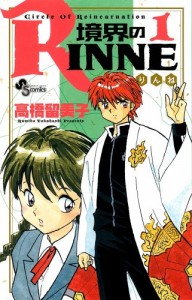 Finally, the most recent of Rumiko Takahashi’s manga an ongoing series started in 2009 with no signs of an anime adaptation as of yet, Kyoukai no Rinne(Lit. “The Boundry’s Rinne”/”Rinne of the Boundry”) although the English release inexplicably added a hyphen and shortened the title to just RIN-NE. The series follows a highschool girl named Sakura with the ability to see ghosts after she becomes entangled with the supernatural affairs of a shinigami named Rinne Rokudou. As a human condemned to work as a shinigami Rinne must collect and guide human souls to the very literal wheel of incarnation that governs the spirits of the world, as well as combat the corrupted souls that refuse to pass on. There was some small controversy over the fact that the initial set up for the story is remarkably similar to that of Kubo Tite’s ongoing Bleach manga, but ultimately that did very little to deter the manga’s success as it’s first few volumes ranked within the top 20 best selling of their respective sales periods.
Finally, the most recent of Rumiko Takahashi’s manga an ongoing series started in 2009 with no signs of an anime adaptation as of yet, Kyoukai no Rinne(Lit. “The Boundry’s Rinne”/”Rinne of the Boundry”) although the English release inexplicably added a hyphen and shortened the title to just RIN-NE. The series follows a highschool girl named Sakura with the ability to see ghosts after she becomes entangled with the supernatural affairs of a shinigami named Rinne Rokudou. As a human condemned to work as a shinigami Rinne must collect and guide human souls to the very literal wheel of incarnation that governs the spirits of the world, as well as combat the corrupted souls that refuse to pass on. There was some small controversy over the fact that the initial set up for the story is remarkably similar to that of Kubo Tite’s ongoing Bleach manga, but ultimately that did very little to deter the manga’s success as it’s first few volumes ranked within the top 20 best selling of their respective sales periods.
I must admit in spite of the premise being fairly bland and generic I fell in love with Rinne when I first began reading it and for just one reason: Rinne’s character is defined by his stinginess and he is an almost unimaginable cheapskate in part due to the fact that all of his various shinigami gadgets and rituals require monetary offerings as a kind of play on the traditional myth of the dead paying their fare for passage into the next life. At first it seems like just another little character quirk to try and set her protagonist apart from the rest of the generic shounen herd, but then it dawned on me: the last time Rumiko Takahashi started a series was when she started Inuyasha in 1996.
A lot of things have changed since then, namely the rise of expensive and yet disposable electronic goods and what’s more Takahashi’s career first took off in the early 80s so she has watched technology, urban life, and youth culture grow and change over the past 30 years and rather than try to keep up with modern trends directly, this was her way of updating her sense of style. Rather than try to mimic the appeal and style of younger authors she chose to create a modern hero that embodies older virtues, in this case thriftiness. In an age where disposable income and technology seem to be taken for granted by the young new generation Rinne presents a hero who puts even more than what is due value on his money and does everything he can to save it, only reluctantly purchasing the things he finds he absolutely needs to survive. A truly admirable moral to push in this day and age.
 So, this is it! You’ve made it through my briefing on the past 33 years of Rumiko Takahashi’s career and I while I’m sure you’ve all had your opinions on Takahashi’s work before now, I hope that I’ve managed to introduce you to some new titles and drawn some interest in some of Rumiko Takahashi’s work. Although not always groundbreaking, and certainly with her own little quirks and faults, Takahashi has been a consistent hit author/artist and pillar of the manga industry for over 30 years now.
So, this is it! You’ve made it through my briefing on the past 33 years of Rumiko Takahashi’s career and I while I’m sure you’ve all had your opinions on Takahashi’s work before now, I hope that I’ve managed to introduce you to some new titles and drawn some interest in some of Rumiko Takahashi’s work. Although not always groundbreaking, and certainly with her own little quirks and faults, Takahashi has been a consistent hit author/artist and pillar of the manga industry for over 30 years now.
For those of you returning, I encourage you to follow through on the little challenge I issued you all last November, and I hope to read about your discoveries in the forums in the Anime and Manga sub-forums under the Entertainment section. For those of you who just sat through this wall of text for the first time, I can promise you not all my reviews are quite this long, but I’ll admit that they do tend to be a little on the lengthier side. I hope you can look past that, or perhaps even find some enjoyment in it, and meet me here again every 1st and 3rd Wednesday of the month! And finally, to everyone new and old, Happy New Year!




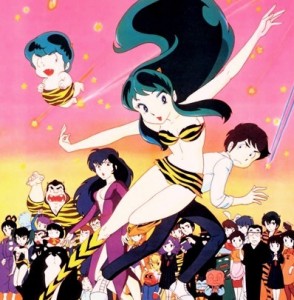


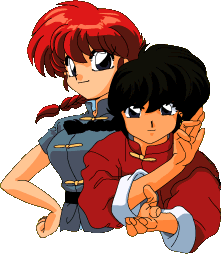




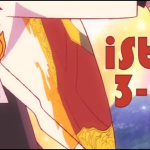









This was nice in all honesty since I can’t say I’m a very big fan of her specifically. I can just think of other artists or series I would prefer to watch over some of the ones I have seen. Granted, I respect what she’s done in terms of achievements.
Either way, glad to see your articles are back in business!
I’m actually not a huge fan of her myself, but I’ve been wanting to do a female author and she’s one of the biggest who has also been around the longest. Glad to be writing articles again but it may take me longer than I thought to really get back into the groove of things. This one came out a bit clunky, but they’ll get better by the time winter’s over.
Hard to deny Takahashi’s successes – not too many other mangaka can boast this number of hits, even if they are of similar formula in many ways.
I do love InuYasha – seems to be a good refinement of her earlier efforts. And for those of age there is the InuYasha drinking game, everytime they say “InuYasha” take a drink – with most episodes you don’t last very long.
Also nice reference to “I dream of Jeannie” and the sudden girlfriend scenarios we see all the time now – interesting and never put that together.
Fun and informative! Thanks.
For some reason it only just now dawned on me that most anime fans now’days probably have no idea what I Dream of Jeannie is…
Ranma 1/2 and Pokemon were some of my earliest anime I fell in love with, and I have tons of Ranma manga, which is a series i still want to finish. Then Inuyasha was the gate way anime of fandom for my sister, so you could say she is what introduced my family into anime.
I have a couple volumes of Ranma laying around. they are big compared to many other manga volumes.
Well, the first on is anyway. I think the rest are pretty average
Yeah, the first volume of Ranma is huge, and the others are quite average, but there are a few that are thicker than the others.
[…] Earlier this month I tried to roughly sum up the career of Rumiko Takahashi, a now 25 year veteran of the manga industry and one of the most popular female authors/artists of her generation still in publication today. While her work incorporates a good deal of appeal towards female readers however, she has always been published in shonen and seinen targeted magazines rather than marketed as an actual shoujo author. So, although Takahashi was a good start, today I’m cranking things into high gear and tackling the very heart of popular shoujo trends, Mahou Shoujo (lit. “Magical Girl”), from the origins of the genre, to the development of the modern formula, right up to the current running titles. […]